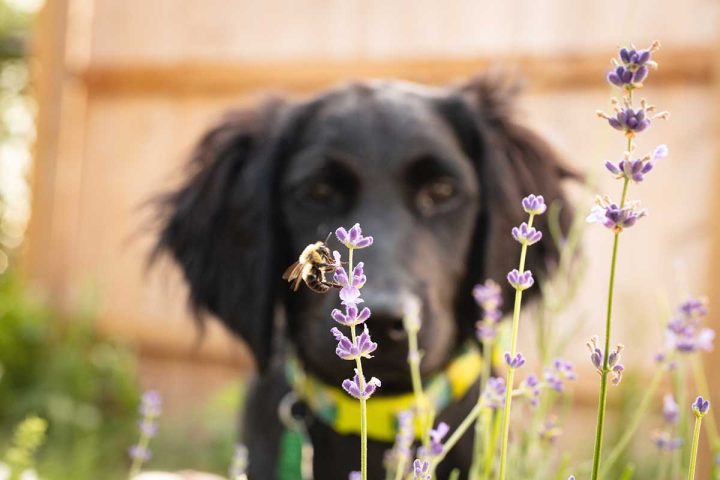As the weather warms up and flowers bloom, both pets and their owners enjoy spending more time outdoors. However, with the beauty of spring and summer comes the increased activity of bees and other stinging insects. While bees are vital for the ecosystem, they can pose a danger to curious pets who may get a little too close. A bee sting may cause pain, swelling, and, in some cases, serious allergic reactions. So, how do you keep your pet safe from bee stings, and what should you do if they get stung?
Here’s everything you need to know about pets and bee stings:
Why Do Pets Get Stung?
Pets, especially dogs, tend to be curious creatures. They often chase after buzzing insects or paw at them out of curiosity. This behaviour puts them at risk of getting stung, particularly on the face, paws, or mouth. Cats are usually more cautious, but even they can be victims of bee stings if they play with or disturb a bee.
Signs Your Pet Has Been Stung by a Bee
Pets can’t tell us they’ve been stung, but there are several signs to watch for, including:
- Sudden yelping or pawing at the face or mouth
- Swelling, redness, or hives at the sting site
- Biting or licking the area where they’ve been stung
- Drooling or difficulty swallowing (if stung in the mouth or throat)
- Limping if they were stung on the paw
- General discomfort or restlessness
When to See Us
Most bee stings will heal on their own with minimal care. However, you should seek veterinary attention if:
- Your pet has been stung multiple times.
- The sting is near their eyes, mouth, or throat.
- They show signs of an allergic reaction (swelling of the face, difficulty breathing).
- They continue to show pain, limping, or discomfort after 24 hours.
Preventing Bee Stings in Pets
While you can’t always prevent your pet from encountering bees, here are a few tips to reduce the risk:
- Supervise outdoor play: Keep an eye on your pet when they’re outside, especially around flowering plants where bees may be active.
- Avoid areas with high bee activity: Steer clear of places with lots of flowers, gardens, or clover patches when walking your dog.
- Teach “leave it”: Training your dog to ignore buzzing insects can help prevent them from chasing or pawing at bees.
- Keep food covered: Bees are attracted to sweet treats, so avoid leaving food uncovered during outdoor picnics or barbecues where your pet might explore.
Conclusion
Bee stings are an unfortunate part of outdoor life, but with some preparation and knowledge, you can help your pet avoid the worst. Always monitor your furry friend when they’re exploring outdoors, and if they do get stung, know the steps to take to keep them comfortable and safe. Remember, if your pet shows signs of an allergic reaction or gets stung multiple times, seek veterinary care immediately.
With a little care and caution, your pet can enjoy the outdoors safely this spring and summer!



